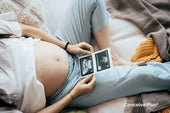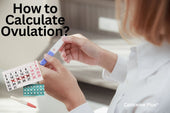How Long Does Ovulation Last and What Are the Symptoms of Ovulation

Understanding how long does ovulation last is one of the most important steps when you’re trying to conceive or even just trying to understand your body better. Ovulation is a small but mighty part of the menstrual cycle that plays a big role in fertility. If you're looking for ways to get pregnant fast or just keeping track of your reproductive health, knowing what’s going on in your body during ovulation can make a huge difference. Let’s break it all down: what does ovulation mean, what happens during ovulation, how long it lasts, when it happens, and what signs of ovulation you should watch for.
Key Facts
- Ovulation lasts 12 to 24 hours, but the fertile window spans up to six days.
- Ovulation usually occurs around day 14 of a 28-day menstrual cycle but varies based on individual cycle lengths.
- Common signs include clear, stretchy cervical mucus, temperature rise, breast tenderness, and mild abdominal pain.
- The cycle includes menstrual, follicular, ovulation, and luteal phases, all crucial for fertility.
- Tools like basal body temperature, cervical mucus observation, ovulation predictor kits, and menstrual cycle charting help.
- The fertile window includes the five days before ovulation and the day of ovulation itself.
- Stress, hormonal imbalances, PCOS, and lifestyle factors can delay or disrupt ovulation.
What Is Ovulation and Why Does It Matter?
So, what is ovulation and what does ovulation mean? Simply put, ovulation is when a mature egg is released from one of your ovaries, ready to meet a sperm for fertilization. It happens once in every menstrual cycle and is key for conception. Without ovulation, pregnancy can’t happen naturally. The egg travels through the fallopian tube after being released, and this is the time when it can meet sperm.
Ovulation doesn’t happen randomly. It’s a carefully timed event controlled by hormones. When the levels of certain hormones like luteinizing hormone (LH) rise, the egg gets ready for its release. For people trying to conceive, understanding the conceive meaning in pregnancy can help track fertility better [1].
But why does this matter so much? Well, ovulation is a major part of the larger picture, which includes all the menstrual cycle phases. It connects the follicular phase (where the egg matures) with the luteal phase (where your body prepares for a possible pregnancy). Everything works in sync, and that’s why knowing when when does ovulation occur can be a game-changer for conception [2].
When Does Ovulation Happen?
A lot of people ask, when is ovulation? The answer is, it depends. For someone with a standard 28-day menstrual cycle, ovulation usually happens around day 14. But everyone’s body is different, so this can vary. Some cycles are shorter, like 21 days, while others can stretch to 35 days. In these cases, when does ovulation occur might shift a bit [3].
It’s not just about the length of your cycle, though. Stress, diet, and even sleep patterns can influence when does ovulation happen. Hormones play the leading role here, and keeping an eye on them can help you figure out when does ovulation begin for you.
By using tools like apps or even an old-school menstrual cycle chart, you can start spotting patterns in your cycle. Understanding this timing can help you know when does ovulation come or prepare for when will ovulation occur during your next cycle [4].
How Long Does Ovulation Last?
So, here’s the big question: how long does ovulation last? The actual ovulation process—when the egg is released from the ovary—happens in an instant. But once the egg is out, it only survives for about 12 to 24 hours. That’s it. This might seem like a small window, but it’s actually part of a bigger fertile window that lasts around six days.
This fertile window includes the five days leading up to ovulation and the day of ovulation itself. Sperm can survive in the reproductive tract for up to five days, which is why the fertile window is longer than how long is ovulation itself.
Knowing how long do you ovulate can make all the difference when planning for conception—or trying to avoid it. It’s a short window, but timing is everything [5].
Phases of the Menstrual Cycle
To understand ovulation, it’s important to know the phases of menstrual cycle. These include the menstrual phase, the follicular phase, ovulation, and the luteal phase. Each phase plays a unique role.
The menstrual phase is when your period occurs, marking the start of your cycle. After that comes the follicular phase, where hormones prepare your body for ovulation. Then, ovulation happens in the middle of the cycle. Finally, the luteal phase prepares the uterine lining for implantation, just in case fertilization happens.
By understanding these period phases and how they connect, you can get a clearer picture of when do women ovulate and how your body works [6].
Recognizing Signs of Ovulation
There are plenty of symptoms of ovulation that can help you figure out when you’re fertile. One of the most common ovulation signs is changes in cervical mucus. During ovulation, cervical mucus becomes clear, stretchy, and slippery—kind of like raw egg whites. This helps sperm swim more easily toward the egg.
Another common symptom is a slight rise in your basal body temperature. After ovulation, the hormone progesterone causes a small temperature increase, which you can track with a special thermometer. Some people also experience breast tenderness, mild abdominal pain (called mittelschmerz), or even mood swings [7].
By keeping track of these symptoms, you can better understand when do you begin ovulating and plan accordingly.
How to Track Ovulation
Tracking ovulation doesn’t have to be complicated. Many tools and methods can help you figure out when does ovulation start. One of the simplest ways is monitoring your basal body temperature every morning. A slight temperature increase usually indicates that ovulation has just occurred.
You can also observe your cervical mucus to identify fertile days. During ovulation, it becomes more slippery and stretchy. Ovulation predictor kits (OPKs) are another reliable tool. They detect the LH surge in your urine, which happens just before ovulation.
Keeping a journal or using a menstruation cycle chart can help you see patterns over time, making it easier to pinpoint when did ovulation start and what your body’s cycle looks like [8].
Fertility and the Ovulation Window
Even though ovulation itself lasts for just 12 to 24 hours, the fertile window is much longer. Sperm can live in the female body for up to five days, meaning you have about six days in a cycle when pregnancy is possible.
This window includes the five days before ovulation and the day it happens. That’s why it’s important to track when does a woman ovulat and time intercourse carefully.
Understanding periods after how many days of ovulation can also help predict when to expect your next cycle. Typically, menstruation occurs about 14 days after ovulation if pregnancy doesn’t happen [9].
Factors That Affect Ovulation
Sometimes, ovulation doesn’t follow the usual schedule. Stress, hormonal imbalances, and health conditions like PCOS can disrupt the cycle. Lifestyle factors, including diet and exercise, also play a role in regulating when do ovulation and keeping your cycle on track.
Nutrients like folic acid, Myo-Inositol, and CoQ10 are known to support hormonal health and improve egg quality. These nutrients can help balance hormones and enhance fertility, making conception more likely.
By addressing these factors, you can gain more control over when will ovulation occur and ensure your body is in the best condition for pregnancy [10].
Ovulation, Conception, and Implantation
After ovulation, the egg travels down the fallopian tube. If sperm is present, fertilization can occur. The fertilized egg then moves to the uterus, where it implants into the uterine lining within 6 to 12 days. If fertilization doesn’t happen, the body sheds the uterine lining during menstruation.
Knowing what is considered last day of period and how it fits into your cycle can provide insights into your fertility and reproductive health. Tracking ovulation can also help identify potential issues early on, ensuring you get the support you need [11].
The Bottom Line
Understanding how long does ovulation last and the symptoms associated with it can make a world of difference when trying to conceive or just learning about your body. Recognizing the patterns in your menstrual cycle and tracking ovulation through its symptoms of ovulation ensures you can align your goals with your body’s natural rhythm. Incorporating healthy lifestyle choices and fertility-supporting nutrients can further enhance your reproductive health. Whether you’re planning for a baby or just curious about your cycle, knowing your body’s signals is an empowering first step.
FREE OVULATION CALCULATOR: Calculate Your Ovulation Days Here
FAQs
What is ovulating def?
Ovulating means the process of releasing a mature egg from the ovary.
How do you know if you’re ovulating?
You may notice symptoms like changes in cervical mucus, mild abdominal pain, or a rise in basal body temperature.
How long after ovulation can you get pregnant?
You’re most fertile in the 12 to 24 hours after ovulation, but sperm can survive up to five days in the reproductive tract.
Why is ovulation important for conception?
Without ovulation, a mature egg isn’t available for fertilization, making natural conception impossible.
How does stress affect ovulation?
Stress can disrupt hormonal balance, delaying or even preventing ovulation in some cycles.
Citations
- Liang, Y., Hou, X., Chen, H., Yang, R., Wang, R., Mao, R., Zhao, J., Chen, H., & Cheng, J. (2024). Assisted Reproductive Technology Outcomes in Women with Normal Ovarian Response Receiving Recombinant Luteinizing Hormone/Human Menopausal Gonadotropin: An Observational Study. International journal of women's health. Available at: https://pmc.ncbi.nlm.nih.gov/articles/PMC11185249/
- Wang, X., Chen, C., Wang, L., Chen, D., Guang, W., & French, J. (2003). Conception, early pregnancy loss, and time to clinical pregnancy: a population-based prospective study. Fertility and sterility. Available at: https://pubmed.ncbi.nlm.nih.gov/12620443/
- Baerwald, A. R., Adams, G. P., & Pierson, R. A. (2003). A new model for ovarian follicular development during the human menstrual cycle. Fertility and sterility. Available at: https://pubmed.ncbi.nlm.nih.gov/12849812/
- Rosenfield, R. L., & Ehrmann, D. A. (2016). The Pathogenesis of Polycystic Ovary Syndrome (PCOS): The Hypothesis of PCOS as Functional Ovarian Hyperandrogenism Revisited. Endocrine reviews. Available at: https://pubmed.ncbi.nlm.nih.gov/27459230/
- Fehring, R. J., Schneider, M., & Barron, M. L. (2008). Efficacy of the Marquette Method of natural family planning. MCN. The American journal of maternal child nursing. Available at: https://pubmed.ncbi.nlm.nih.gov/18997569/
- Gaskins, A. J., & Chavarro, J. E. (2018). Diet and fertility: a review. American journal of obstetrics and gynecology. Available at: https://pubmed.ncbi.nlm.nih.gov/28844822/
- McCue, K., & DeNicola, N. (2019). Environmental Exposures in Reproductive Health. Obstetrics and gynecology clinics of North America. Available at: https://pubmed.ncbi.nlm.nih.gov/31378288/
- Zegers-Hochschild, F., Adamson, G. D., de Mouzon, J., Ishihara, O., Mansour, R., Nygren, K., Sullivan, E., Vanderpoel, S., International Committee for Monitoring Assisted Reproductive Technology, & World Health Organization (2009). International Committee for Monitoring Assisted Reproductive Technology (ICMART) and the World Health Organization (WHO) revised glossary of ART terminology, 2009. Fertility and sterility. Available at: https://pubmed.ncbi.nlm.nih.gov/19828144/
- Wilcox, A. J., Baird, D. D., & Weinberg, C. R. (1999). Time of implantation of the conceptus and loss of pregnancy. The New England journal of medicine. Available at: https://pubmed.ncbi.nlm.nih.gov/10362823/
- Practice Committee of the American Society for Reproductive Medicine (2006). Aging and infertility in women. Fertility and sterility. Available at: https://pubmed.ncbi.nlm.nih.gov/17055834/
- Fritz, R., & Jindal, S. (2018). Reproductive aging and elective fertility preservation. Journal of ovarian research. Available at: https://pubmed.ncbi.nlm.nih.gov/30098598/
Conceive Plus is the best place to buy myo-inositol online for the best myo-inositol supplements Conceive Plus Ovulation Support contains premium myo-inositol for sale. Order myo-inositol capsules online today to boost your ovulation and regulate hormones and menstrual cycles.





















